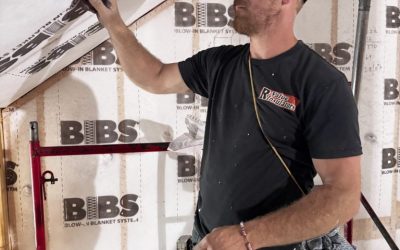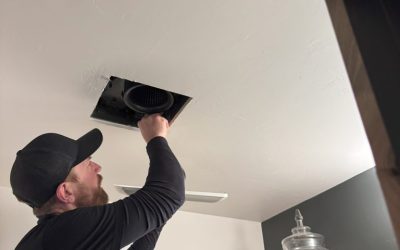It’s a common problem, and we bet you’ve seen it in your home.
As soon as the temperature drops, the windows get shut, and the heat is turned on, that insidious layer of moisture appears, building up on the inside of the windows and slowing trickling down into the sill below. It obscures the view, puddles in the window sill, and is, in general, a nuisance. Luckily, there are ways to reduce this obnoxious wet window phenomenon. Read on to find out how you can enjoy dry, clear windows year-round!
Why Does Condensation Form On Window Interiors?
Condensation forms on your windows when the warm, humid air from your home’s heated interior meets cooler air, or in this case, a cool, glass surface. Cold air cannot hold as much moisture as warm air, so the humidity—or water vapor—starts to deposit itself onto the glass in the form of liquid. This water can build up on the glass and begin to drip down into the window sill. If your home is cool enough (or your windows are older or drafty), the condensation can even freeze on the glass.
Can Interior Window Condensation Cause Other Problems?
As you might imagine, this amount of moisture in the interior of the home can cause issues. In addition to the obvious problem of obscuring the view, the primary issue in this case is the potential for it to damage the sills or wood below the windows. When the condensation builds to the point of dripping down the glass, it will pool in the sills below. This pooling water can eventually leak into and cause damage or even rot to the sills, framing, or insulation beneath the windows. Water can also damage or stain drywall, lead to peeling or bubbling paint, and even cause mold or mildew.
How To Fix Moisture Build Up on Window Interiors
Luckily, there are ways to remedy the problem of interior window condensation. Remember, it’s the humidity in your home that causes the moisture buildup, so reducing the humidity levels will reduce the likelihood of moisture buildup. One of the simplest ways to do this to increase the exchange of air. Aside from cracking a window, you can also reduce interior humidity by running exhaust fans in bathrooms and kitchens, especially while showering or cooking.
Beyond that, another way to reduce interior moisture buildup on windows is to increase ventilation in the home. Although it’s not as simple as throwing open a window after a hot shower, there are mechanical improvement options. Based on building science practice, these mechanical improvements are designed to foster the exchange of air, making a big difference in interior moisture buildup. As a bonus, these improvements also increase overall interior air quality.
Contact Northern Wisconsin’s Ventilation Experts Today
If you deal with humid, dripping windows every winter, RVI is happy to come take a look at your home or business. Our building science experts can inspect the building and provide insight into ways to reduce or even eliminate this issue—before it has a chance to turn into a bigger issue. Get in touch with us today and start enjoying your windows (and the view of our beautiful Northwoods) year-round!



